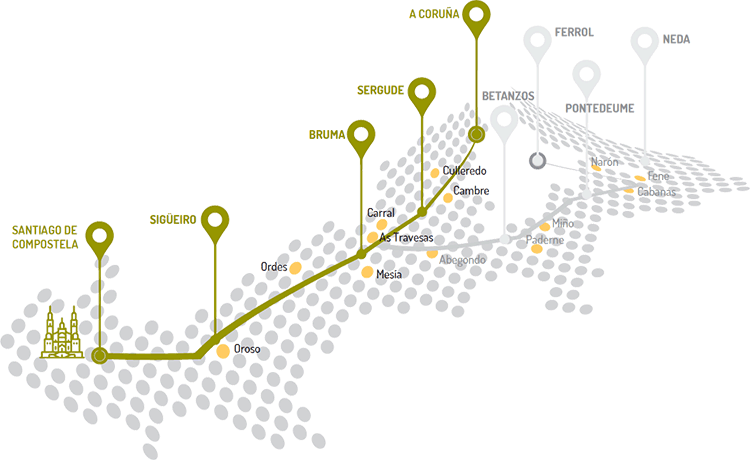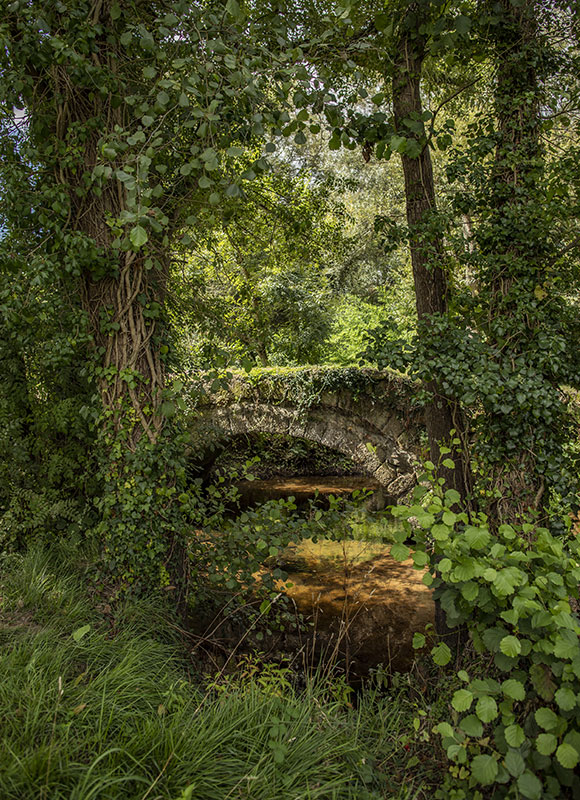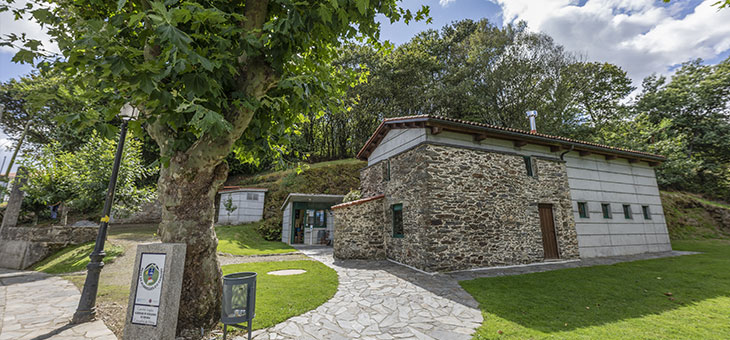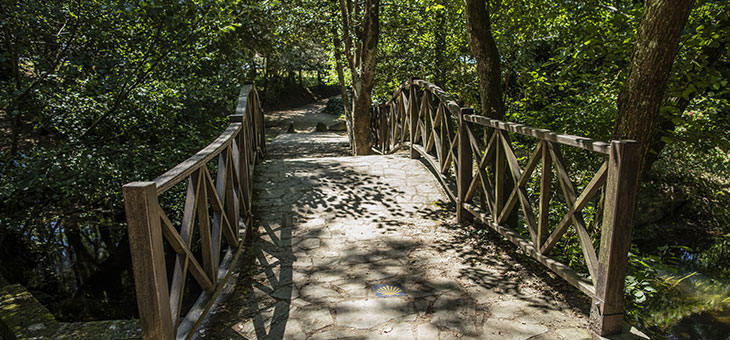Camino Inglés from A Coruña
This 73.7 -kilometre route, known as the Camiño do Faro (The Lighthouse Way), separates the cities of A Coruña and Santiago de Compostela. It can be done in three or four stages.
Since medieval times, the ‘City of Glass’ (A Coruña) has been the main port of arrival for pilgrims and sailors from the north who, in the wake of the discovery of the Apostle's tomb, were eager to reach Santiago de Compostela and after docking on the Galician coast.
The city had already been a welcome port for sailors since Roman times, guided by its well-known lighthouse: the Tower of Hercules, which is why the Camino Inglés from A Coruña is known as Camiño Inglés desde A Coruña (The Lighthouse Way).
The peak of its splendour came in the 15th century when the ships loaded with merchandise arrived at the port with teeming with pilgrims. These travellers continued on to Compostela while the crew unloaded and loaded the new merchandise for the northern lands. The port records, with the permits for these stowages, act as notaries of this occurrence and the notoriety of the importance of the Camino Inglés at this time, and with greater activity during the Jacobean periods.

The different stages from A Coruña
The 73.7 kilometres that separate the city of A Coruña and Santiago de Compostela can be done in several Caminos. Generally, it is done in three or four stages with stops at the end of each stage in Sergude, Bruma, Sigüeiro and Santiago. Although the more adventurous pilgrims make the first stage all the Camino from A Coruña directly to Bruma (33 km).
The possibility of doing the Camino Inglés in four stages allows us to enjoy the environment in a more relaxed way, giving us more time to appreciate the beauty spots in the different municipalities through which the Camino passes. Along the Camino we can get to spend more time with the hospitable Galician people who will welcome and help pilgrims along the Camino Inglés.
![]() Start of route
Start of route ![]() End of route
End of route ![]() Public hostels
Public hostels ![]() Private hostels
Private hostels ![]() Other establishments
Other establishments ![]() Tourist information points
Tourist information points ![]() Airports
Airports ![]() Buses
Buses ![]() Trains
Trains
1. A Coruña - Sergude
Starting from the ‘City of Hercules’, this first stage takes an urban path for part of the 20 km that make up the route.
2. Sergude - Bruma
13 km stage that is physically very demanding because of the long climb, but at the same time very rewarding because of the landscape.
3. Bruma - Sigüeiro
Forests and medieval buildings make up the landscape of this stage with a mostly descending route along over 24.2 km.
4. Sigüeiro - Santiago de Compostela
The 16.5 km of the last stage of the Camino offers incredible natural spaces that cross the Tambre and the Enchanted Forest.





